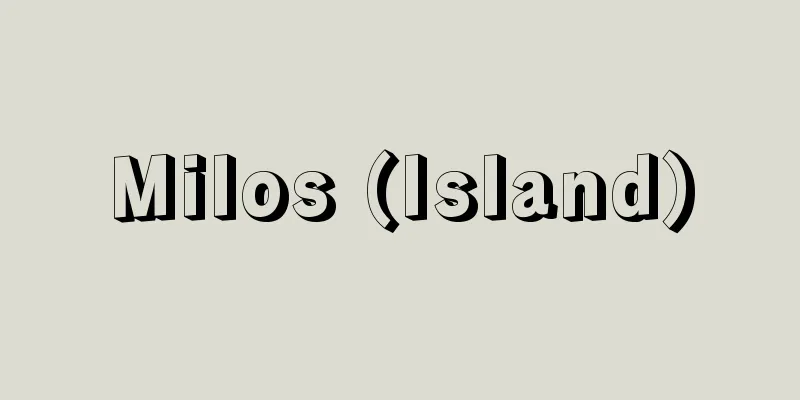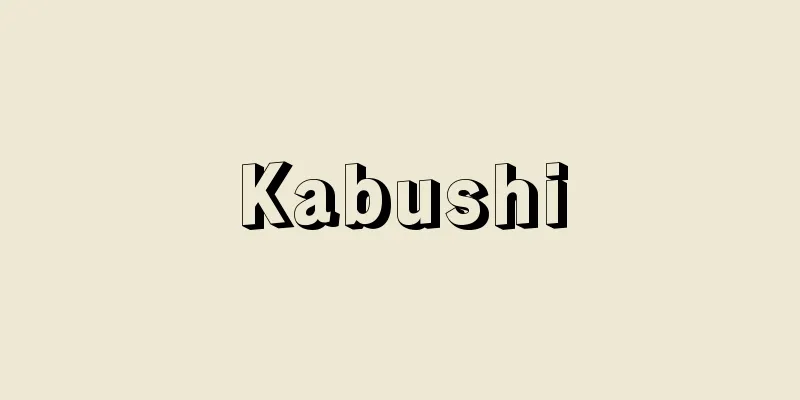Camouflage (English spelling) camouflage French

|
A military term that began to be used in World War I. Like protective coloring for animals, it is a technique to make it difficult for the enemy to identify and judge the movements of friendly personnel, weapons, facilities, positions, aircraft, ships, etc., and to prevent damage from enemy fire. There are two types: camouflage and camouflage. Camouflage is a method of avoiding being targeted by the enemy by attaching grass or leaves to soldiers or weapons to match the surrounding natural conditions, topography, and features, or by covering them with colored camouflage netting to blur their overall image. Vehicles, ground-based aircraft, positions, supplies, etc. are covered with large camouflage netting and vegetation, but since plants discolor, netting with artificial colored cloth is used. During the Pacific theater, the Japanese military often attached trees to transport ships to camouflage them as islands, but this was a large-scale example. Camouflage involves dressing soldiers in camouflage combat uniforms on land and painting weapons with camouflage colors. Depending on the environment, colors may be green for grasslands, brown for deserts, a mixture of green, black, and brown for the tropics, and white for snowy areas. For ships, irregular patterns are painted on the sides and tops of aircraft to misjudge their capacity, speed, and direction, while for aircraft, the tops are painted irregularly and the bottoms sky blue to make them difficult for enemy aircraft to identify. In contrast, reverse camouflage involves using dolls or models to intentionally make them stand out. In recent years, with the development of color photography, infrared, radar, and reconnaissance satellites, traditional forms of disguise and camouflage are becoming less effective, but deceptive reverse camouflage is being developed to counter them. [Terada Chikao] Source: Shogakukan Encyclopedia Nipponica About Encyclopedia Nipponica Information | Legend |
|
第一次世界大戦から使われ始めた軍事用語。動物の保護色と同じく、敵の目や写真撮影から、味方の人員、兵器、施設、陣地、航空機、艦艇などの識別、動静の判定を困難にし、敵火による損害を防ぐための工作で、偽装(ぎそう)と迷彩(めいさい)の2種がある。偽装は、周囲の自然の状況や地形、地物にあわせて兵員や兵器に草や木の葉を装着させ、あるいは着色した偽装網をかぶせて全体像をぼかし、敵の目標となることを避ける方法。車両や地上にある航空機、陣地、補給物資などには大型の偽装網をかぶせ草木を装着するが、植物は変色するため人工の着色布片を取り付けた網が用いられる。太平洋戦線で日本軍がしばしば輸送船に樹木を装着して島に偽装したが、これは大規模な一例。 迷彩は、陸上では兵員に迷彩戦闘服を着せ、兵器には迷彩着色を施す。環境にあわせ、草原では緑、砂漠では褐色、熱帯では緑・黒・褐の混合、雪地では白色などを用いる。艦船では容量、速度、方向を誤判断させるため、不整形模様を側面や上面に描き、航空機では上面を不整形模様に、下面を空色に塗り、敵機からの識別を困難にする。これらに対し、人形や模型を使い、わざと目だたせる工作を逆カムフラージュという。近年、カラー写真、赤外線、レーダー、偵察衛星などの発達により、在来形の偽装、迷彩は効果を失いつつあるが、それらに対抗するための欺瞞(ぎまん)逆カムフラージュが発達しつつある。 [寺田近雄] 出典 小学館 日本大百科全書(ニッポニカ)日本大百科全書(ニッポニカ)について 情報 | 凡例 |
Recommend
Kakudayu Bushi - Kakudayu Bushi
〘Noun〙 During the Edo period, around the time of t...
Tirich Mir (mountain)
It is the highest peak in the Hindu Kush mountain ...
Amherst
A town in central Massachusetts, USA. It is locate...
Representative value - Daihyochi
If you organize given data, such as a record of t...
fixed bed
...When solid particles are stationary and a flui...
breast cancer
Definition/Concept The mammary gland is a type of ...
Keynesian revolution
The influence of J.M. Keynes's work, The Gene...
Ankokuji Ekei
A Zen monk and politician in the Azuchi-Momoyama ...
Uisu method - Uisu method
…The iodine value may be slightly lower than the ...
Rehn, LM (English spelling)
... refers to surgical treatment for diseases of ...
Kinri Ito
1710-1772 A Confucian scholar in the mid-Edo peri...
Hammond, G.
...Tobacco smoke contains various carcinogenic hy...
Tetsuzan Nagata
An army officer during the Showa period. Born in ...
Kotake [town] - Kotake
A town in Kurate County in the midstream of the On...
Inada Kunitane
1855-1931 Samurai and aristocrats from the end of...









